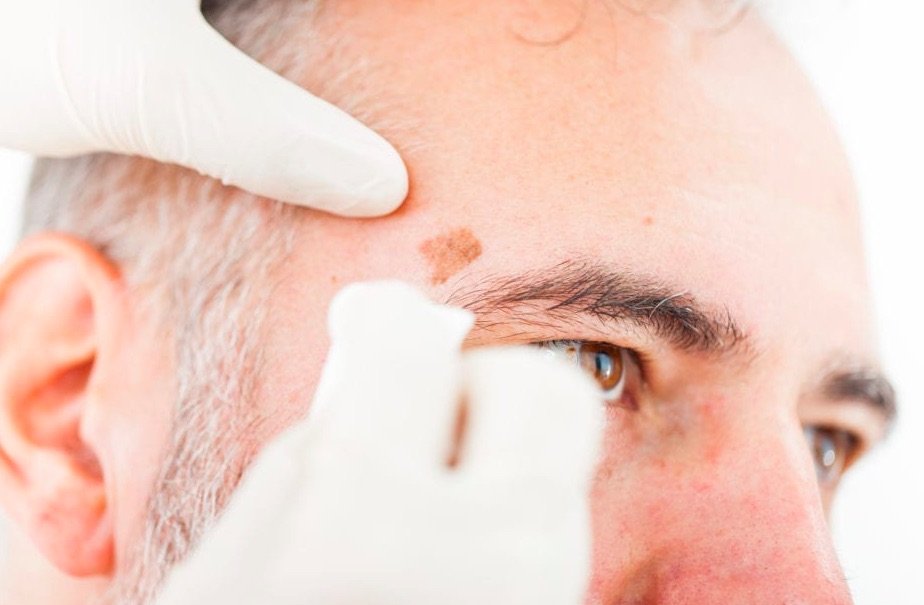Actinic keratosis usually appears as a group of growths. The condition is most commonly seen in the areas of the body exposed to sunlight regularly. Precancerous refers to the fact that the disease could progress to cancer if not taken care of. In the end, the condition known as actinic keratosis must be monitored and treated when it is necessary.
Actinic keratosis can be described as an abrasive and sometimes bumpy area or lesion that appears over the surface. Typically it is seen at the base of the head, back of hands, on the faces, ears, back of the forearms shoulder, neck.
The size of the actinic keratosis is variable, ranging from tiny to 1 inch or greater in size. The color variation also ranges from lightness to darkness, with various variations across the patches.
Actinic keratosis can develop over the course of a few years. The majority of people who develop the condition are older than 40 years old. The patches tend to increase in time.
The symptoms usually are restricted to the area of crusty, scaly skin that develops. Most often there are no indications of symptoms. While under the care of a physician, many people experience frequent patches throughout their lives.
The development of actinic keratosis can increase a person’s likelihood of getting skin cancer. If it is not treated, the actinic keratosis could turn into squamous cell cancer which is a form of cancer that affects the skin.
The Reasons:
Actinic keratosis is known often as solar keratosis. This term describes the reason for skin lesions. It is caused by excessive exposure to or harm due to ultraviolet light.
In contrast to sunburn, which is a reaction to exposure for a long time the UV light keratosis actinic requires years of consistent exposure to the sun for the lesions to form.
Diagnosis
In many cases, people will be able to see the tiny patch of skin that is a result of this type of condition. Like all skin issues or bumps that are nearly discovered it is recommended that patients see the doctors quickly as they can in order to detect any issues early.
A dermatologist or doctor will likely identify a case of actinic keratosis by an easy visual exam. If you are unsure it is possible to perform a skin biopsy. This can be taken where a small portion of the skin affected will be evaluated in a laboratory.
The sample is usually taken at the same time as the dermatologist or doctor’s appointment as the examination for visuals and requires only an injection of numbing.
Surgery
If a patient just has a few patches or spots doctors may suggest eliminating the area affected by minor surgery. Two of the most common procedures are curettage as well as cryotherapy.
Scraping is also known as curettage. It is the use of a device known as a curette. It’s used to scrape away affected skin cells. In some instances, electrosurgery is performed immediately following the scraping. Electrosurgery requires a surgeon employing a pen-shaped instrument to remove and destroy the affected tissues using an electrical current.
Both procedures require a local anesthetic. There are some who experience adverse consequences such as scaring and inflammation.
Freezing, also known as cryotherapy, helps remove lesions by freezing them with liquid nitrogen. The doctor applies the nitrogen liquid to the skin whenever severe cold triggers the skin to peel and blister. After healing, lesions disappear and allow new unharmed skin to develop.
Photodynamic Therapy
Photodynamic therapy is the application of chemicals on the skin’s affected areas. The physician then shines an artificial light onto the chemical. This, at the same time, kills damaged cells and heals actinic keratosis.
Some side effects include swelling, burning, and redness that can be felt during the procedure. A person and their physician can work together to determine the most effective option. In certain situations, there may be a periodic treatment for the recurring patch.
Sensitive Skin
Skin that is sensitive is more likely to react to stimuli which normal skin doesn’t have any reaction. It’s a delicate skin often accompanied by feelings of discomfort, like the sensation of tightness, heat, or redness. Itching is also common. This kind of skin has lost its barrier function, which makes it possible for microorganisms and irritating substances to get into it, increasing the likelihood of an allergic reaction or infection.




